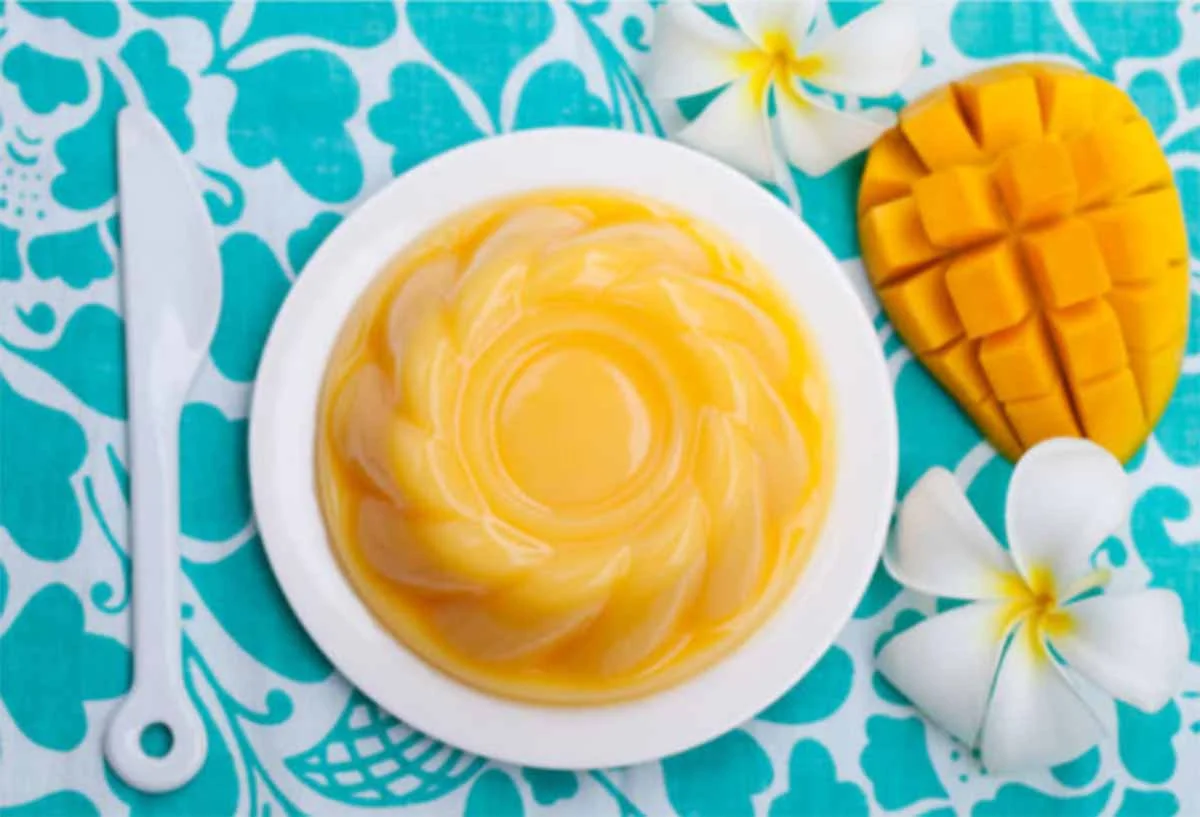Mango pudding is a dessert that originated in China and has become popular around the world. It is a sweet and creamy dessert that is often served chilled and is made with fresh mango puree, milk, sugar, and gelatin. Mango pudding is a great way to enjoy the taste of fresh mangoes in a dessert that is both refreshing and satisfying.
Mango pudding is a versatile dessert that can be served in many different ways. It can be served plain, with a dollop of whipped cream, or with fresh fruit on top. It can also be used as a filling for cakes and pastries or as a topping for ice cream. Mango pudding is a popular dessert in many Asian countries, and it is often served at special occasions such as weddings and festivals.
History of Mango Pudding
Mango pudding is a popular dessert that originated in Asia, specifically in Hong Kong. It is a sweet, creamy, and refreshing dessert that has become a favorite among many people around the world.
The exact origin of mango pudding is unknown, but it is believed to have been created in the early 20th century. It was originally made with fresh mangoes, sugar, and milk, but over time, variations of the recipe have emerged.
In the 1960s, instant mango pudding mix was introduced, making it easier for people to make the dessert at home. It quickly became a popular dessert in Asia and eventually spread to other parts of the world.
Today, mango pudding is enjoyed in many different forms, including as a topping for shaved ice, in bubble tea, and as a filling for cakes and pastries. It is also commonly served in restaurants and at special events.
Overall, mango pudding has a rich history and has become a beloved dessert around the world. Its popularity is a testament to its delicious taste and refreshing texture.
Key Ingredients
Mango Varieties
Mango pudding is a dessert that is all about the mangoes. Different varieties of mangoes can be used to make this dessert, but the most popular ones are Alphonso, Ataulfo, and Honey mangoes. Alphonso mangoes are known for their sweet and rich flavor, while Ataulfo mangoes have a creamier texture and are less fibrous. Honey mangoes, on the other hand, are smaller and have a unique floral taste.
Sweeteners
To sweeten the pudding, sugar is the most commonly used sweetener. However, other sweeteners like honey, maple syrup, or agave nectar can also be used. Brown sugar can be used to give the pudding a caramel-like flavor. For those who prefer a less sweet dessert, using less sugar or a sugar substitute like stevia can be an option.
Thickeners
To achieve the pudding-like consistency, a thickener is required. Cornstarch is the most commonly used thickener, but tapioca starch or gelatin can also be used. Cornstarch is a gluten-free option that helps to thicken the mixture without altering the flavor. Tapioca starch, on the other hand, has a slightly sweet taste and a chewy texture. Gelatin is an animal-based thickener that gives the pudding a smooth and creamy texture.
In summary, the key ingredients for making mango pudding are mangoes, sweeteners, and thickeners. The choice of mango variety, sweetener, and thickener can affect the flavor, texture, and overall quality of the pudding.
Preparation Techniques
Mixing Methods
Mango pudding can be prepared using different mixing methods. One common method is to blend fresh mangoes with milk, cream, sugar, and gelatin. Another method involves using mango puree and condensed milk. Both methods result in a smooth and creamy pudding with a refreshing mango flavor.
To ensure a smooth and lump-free texture, it is recommended to blend the ingredients thoroughly using a blender or food processor. The mixture should be strained through a fine-mesh sieve to remove any fibrous bits of mango.
Setting and Chilling
After mixing the ingredients, the pudding mixture should be poured into individual serving cups or a large mold. The pudding should be chilled in the refrigerator for at least 3 hours or until set.
To unmold the pudding, dip the mold in hot water for a few seconds to loosen the edges. Then, invert the mold onto a serving plate and gently tap the bottom to release the pudding.
For a firmer texture, more gelatin can be added to the mixture. It is important to follow the recipe instructions carefully to ensure the right amount of gelatin is used. Over-gelling the pudding can result in a rubbery texture.
Overall, mango pudding is a simple and easy dessert to prepare. With the right mixing and setting techniques, it can be a refreshing and delicious treat for any occasion.
Serving Suggestions
Garnishes
Mango pudding is a delicious dessert that can be garnished with a variety of toppings to enhance its flavor and presentation. Some popular garnishes for mango pudding include:
- Fresh mango slices
- Whipped cream
- Mint leaves
- Toasted coconut flakes
- Crushed pistachios
These garnishes not only add visual appeal to the dessert but also provide a contrasting texture and flavor to the smooth and creamy pudding.
Pairings
Mango pudding can be served on its own or paired with other complementary flavors to create a more complex dessert experience. Some popular pairings for mango pudding include:
- Vanilla ice cream
- Coconut sorbet
- Pineapple chunks
- Passion fruit sauce
- Ginger cookies
When pairing mango pudding with other flavors, it is important to consider the balance of sweetness, acidity, and texture to create a harmonious combination.
Overall, mango pudding is a versatile dessert that can be customized to suit individual tastes and preferences. With the right garnishes and pairings, it can be transformed into a sophisticated and memorable dessert that is sure to impress.
Nutritional Information
Mango pudding is a delicious dessert that is enjoyed by many people around the world. In addition to its great taste, it also offers some nutritional benefits. Here is some information on the nutritional value of mango pudding:
Calories
A 100-gram serving of mango pudding contains approximately 128 calories. This amount can vary depending on the recipe and ingredients used.
Fat
Mango pudding is a low-fat dessert, with only 1.4 grams of fat per 100-gram serving. This makes it a great option for those who are watching their fat intake.
Carbohydrates
Mango pudding is high in carbohydrates, with approximately 25 grams per 100-gram serving. This is due to the sugar and starch content in the recipe.
Protein
Mango pudding is not a significant source of protein, with only 1.5 grams per 100-gram serving. Those looking to increase their protein intake should consider other options.
Vitamins and Minerals
Mango pudding contains various vitamins and minerals, including vitamin C, vitamin A, calcium, and iron. However, the amounts are not significant enough to make it a primary source of these nutrients.
Overall, mango pudding is a tasty dessert that can be enjoyed in moderation as part of a balanced diet. Its low-fat content and various vitamins and minerals make it a better option than many other desserts.

